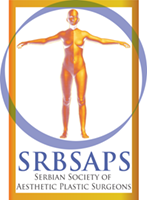Chemical pealing
This is the procedure that improves the texture and the look of the skin.
- Duration of the intervention:
30-60 minutes.
- Anesthesia:
Surface and mid-deep skin layers of the skin are treated together with the machine for skin- cooling. Deep skin layers are treated in local infiltrative anesthesia, analgo-sedation, or general anesthesia.
- Types of chemical peeling:
With various agents - glycolic acid, salicylic acid, lactic acid, fruit enzymes, tartaric acid, malic acid, TCA or trichloroacetic acid, carbolic acid (phenol peels) or various combinations on different concentrations.
- Procedure:
Chemical peeling in particular concentration is applied on the skin, for several minutes. After that, neutralization (cream) is applied, in order to stop the peeling agent to be in effect longer than desired. The process is followed by application of the hydrating cream and SPF 30 cream.
- Post- intervention procedure:
Every day face wash with lukewarm water and soap. Every day application of hydrating cream and SPF cream, for a month. The recovery lasts for seven to 15 days, and in case of deep skin peelings, for up to two months.
- Risks:
Chemical peelings are most often done during the fall or winter. Any sun exposure could lead to hyperpigmentation on the skin. If the procedure done by a non-expert, chemical peeling could leave permanent scars, and hypo or hyper- pigmentations.

